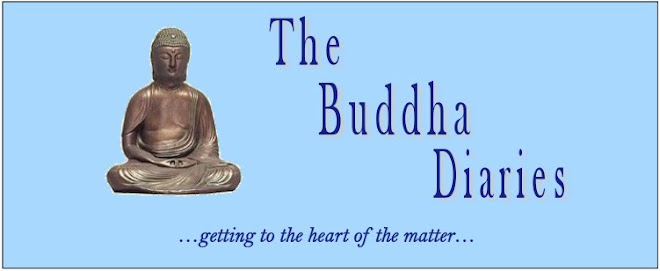We caught up with "Red," the play about the abstract expressionist painter Mark Rothko, in the last days of its run at the Mark Taper Forum in Los Angeles. We had read about it at the time of its New York debut, and had regretted not having the opportunity to see it there.
I had mixed reactions. Let me start with my main demurral: I have always understood drama to be driven by action, and this stage piece is driven by words. They're good words, delivered with utterly convincing panache, but they're words. The whole piece is a running argument between the two protagonists. They do establish a relationship--indeed, an interesting and engrossing one. There is "character" on both sides. There is, in this sense, conflict. But no action, unless you count perhaps the most engaging scene of the entire ninety minutes, in which the two men prime a canvas--in "red", of course!--in a beautifully choreographed dance that involves cadenced brush strokes in great, silent sweeps.
The truth of the matter is that I don't much go for talk-y things. Talkiness about painting, as Rothko himself might be the first to say, is almost beside the point. Particularly about this kind of painting, which is about the intuitive gesture, raw and powerful in its spontaneity. Still, it was pretty emotional talk, about anger, fear, and death, both the fear and the dreadful attraction of death; about the play between the Apollonian and the Dionysian, order and chaos, the light side and the dark; about the old and the young; about the battle between heart and head, between sound and silence, between putting it all out there and bottling it all up.
There was also the shadow of tragedy that overhung the stage. In part, it was that the audience brought along the historical memory of Rothko's eventual suicide, adumbrated in several poignant moments on the stage; in part in his young assistant's backstory, the still vivid memory of having come upon, at the age of seven, his murdered parents in their bedroom in a pool of blood. There was the tragedy, too, of the old guard dying, necessarily, to make space for the new. In the figure of Rothko we saw the approaching death of modernism in art, the death of the artist-as-hero tradition, larger than life and given to grand gestures of protest against the universe--or an unkind world. Succeeding generations have seemed small by comparison, engaged in smaller battles with the social context and the world.
Here's what I liked best about the play: Rothko's constant refrain, from the first moment of the play until its very last. What do you see? He kept asking it and asking it and asking it, never satisfied with the answer--or never satisfied with one answer, or the first. The "fourth wall" of the stage was lined with paintings that we clearly never saw--they were us, the audience--and the pair kept staring out at them, in constant dialogue with the unseen "seen." What do you see? Look again, look better, look more closely. Now what do you see? I kept thinking of my "One Hour/One Painting" sessions, which end on the note that there is always more to see, always something we have missed.
So despite the lack of action, there was plenty of (red?) meat here, plenty to chew on and, eventually, digest. Kudos, too, to Alfred Molina and Jonathan Groff for bravura performances.

No comments:
Post a Comment